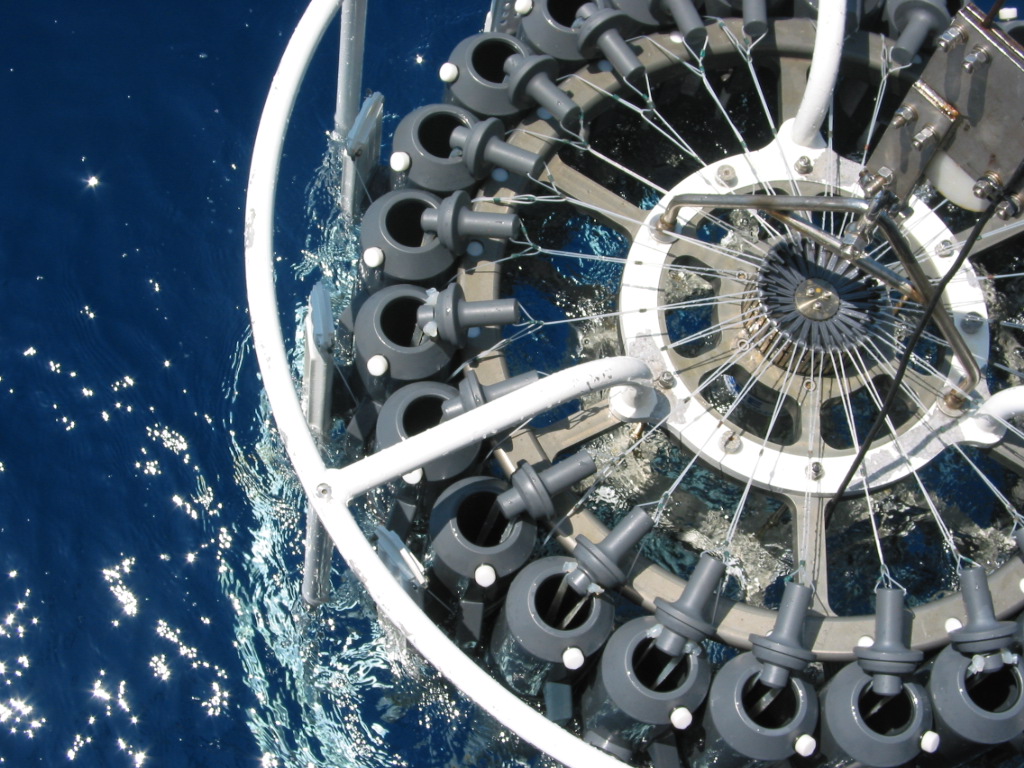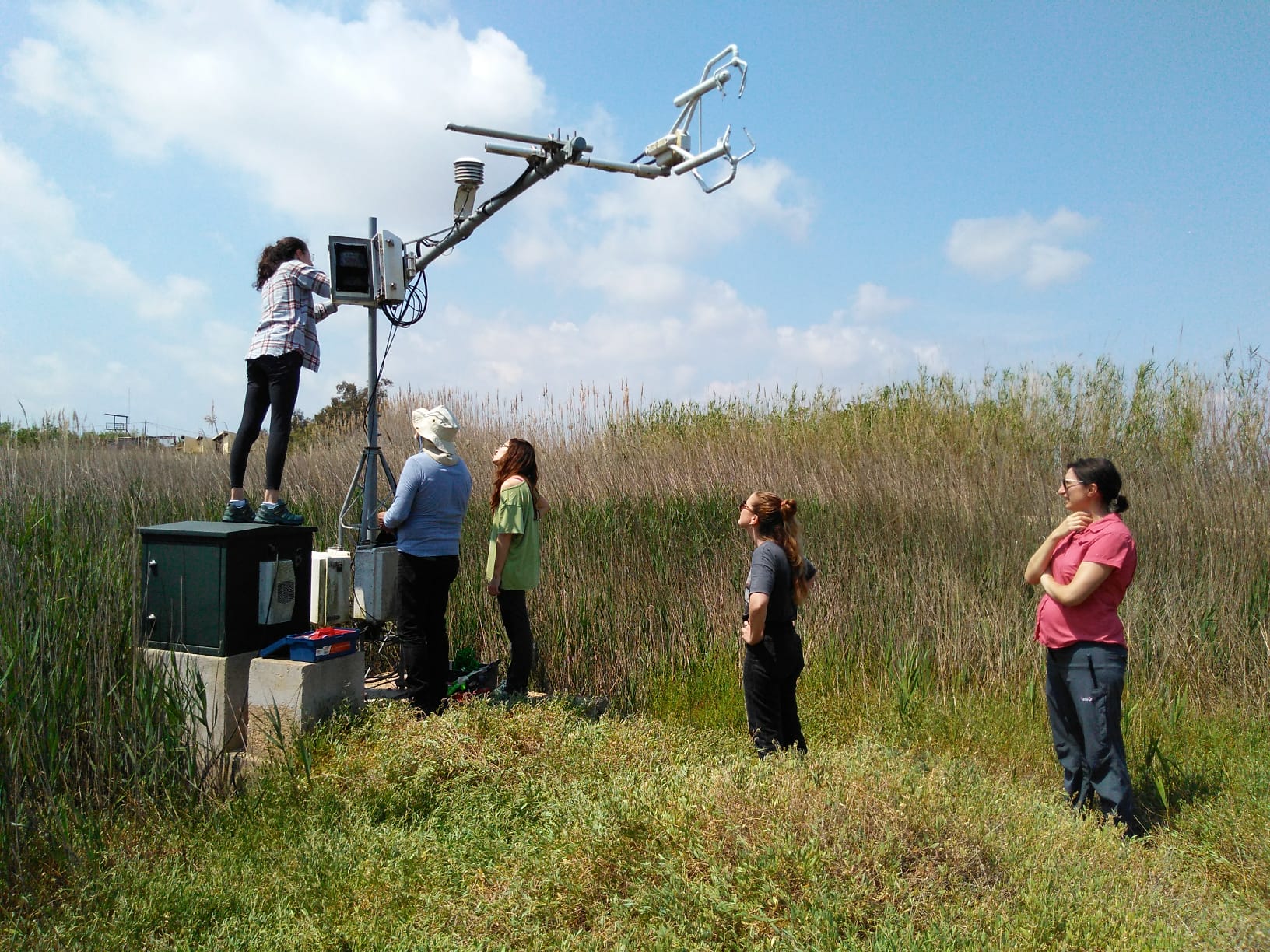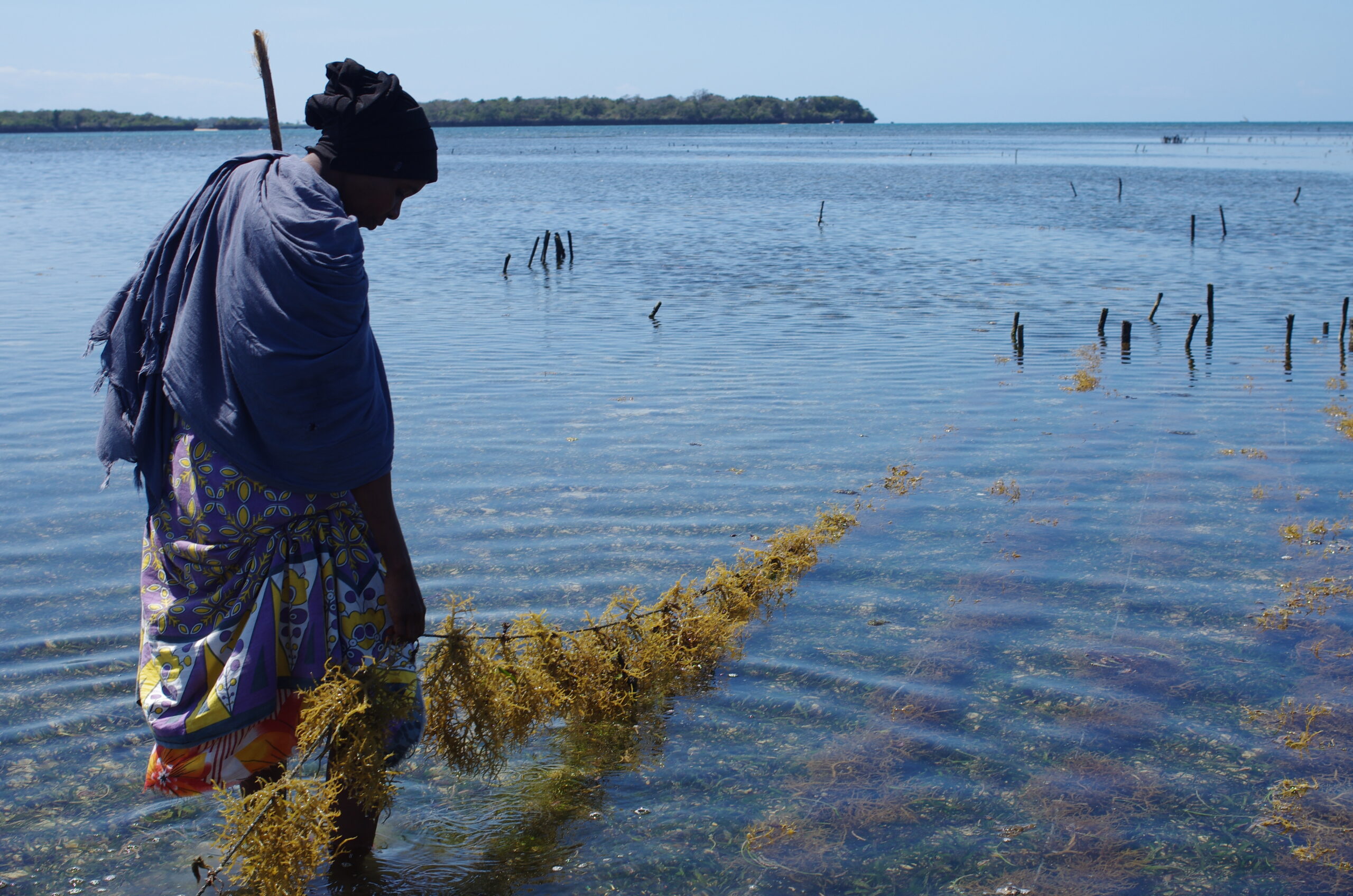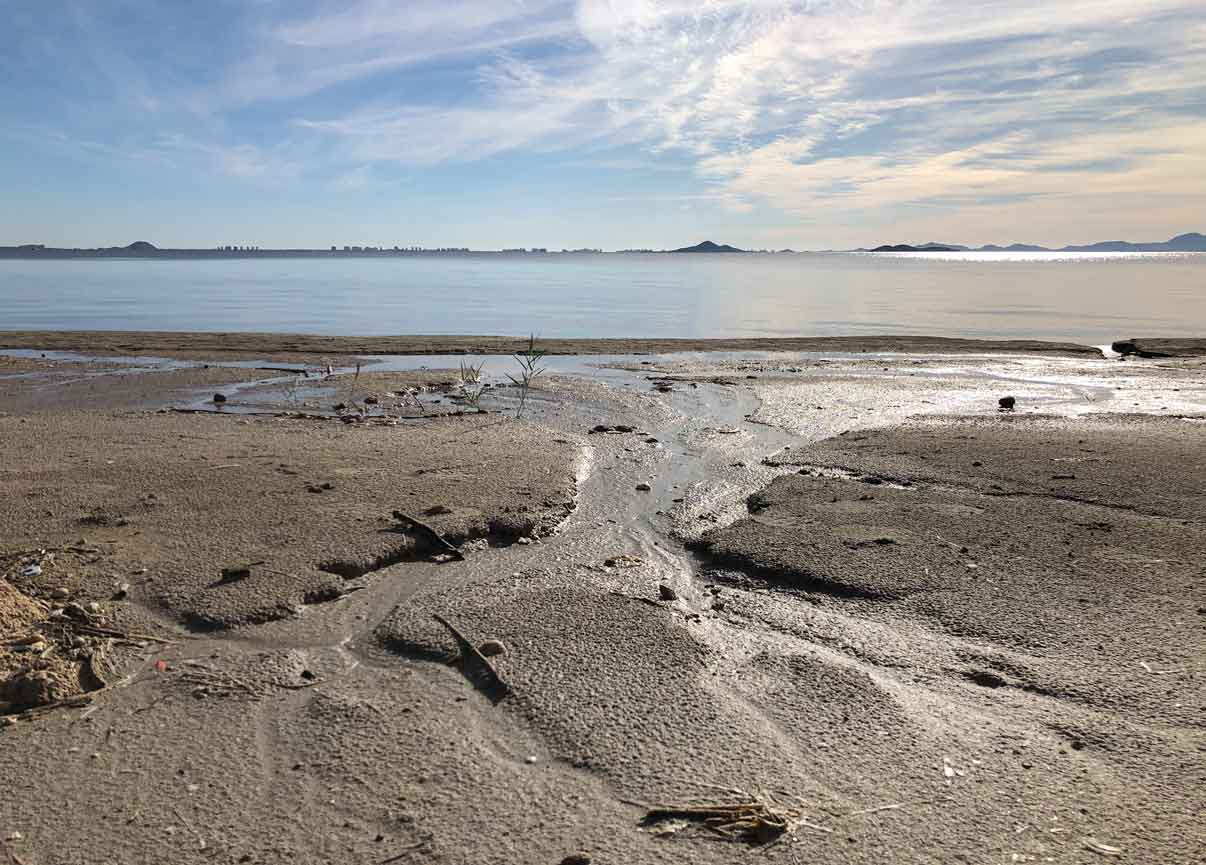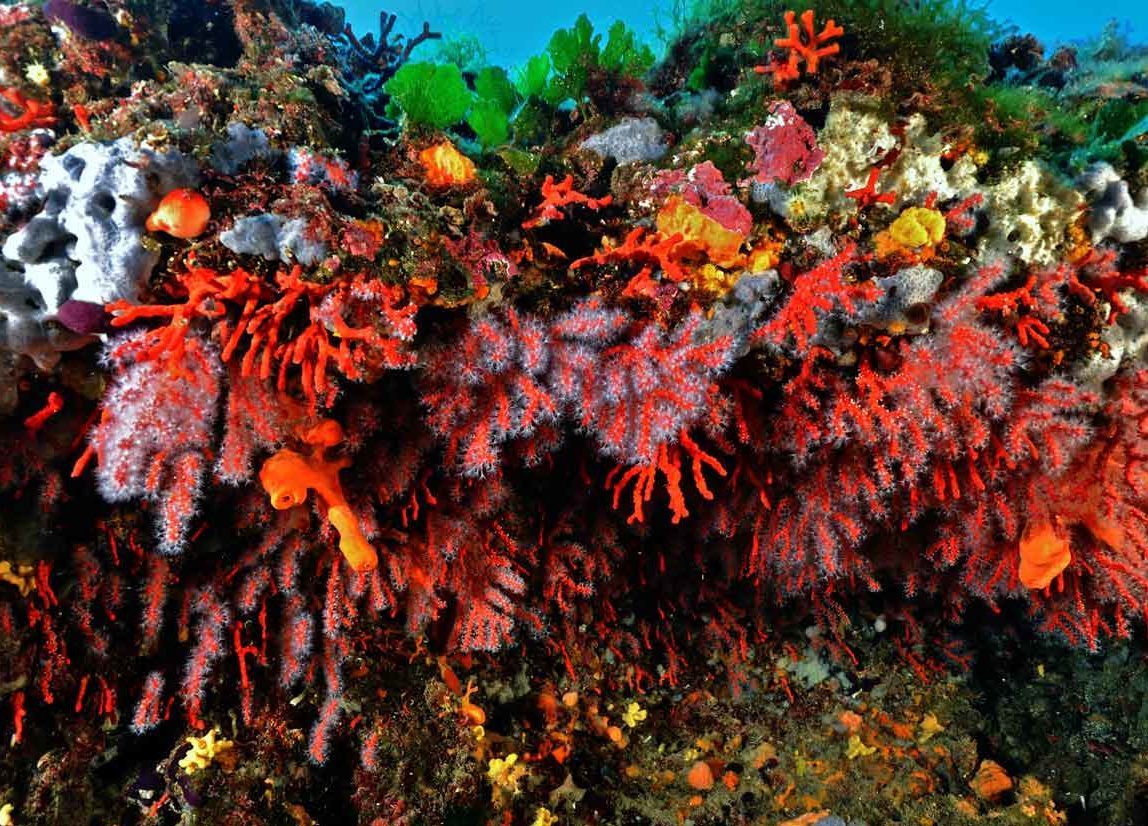The ocean in a high CO2 world
The anthropogenic CO2 emissions into the atmosphere have been increasing since the industrial revolution and accelerating during the last decades. This process alters the climate system and the ocean uptake of anthropogenic CO2, resulting in a shift in the marine carbonate chemistry. Moreover, the extra heat accumulated in the atmosphere due to the greenhouse effect of CO2 is largely transferred to the ocean, enhancing water column stratification (i.e. a process that hampers the supply of nutrients to the upper ocean layers), and increasing the frequency, intensity, extent and duration of marine [...]
Paleoceanography
This research line exploits some of the major planktonic and benthonic calcifiers that impart fossil records of climate and oceanographic changes in marine sediment and other archives over diverse timescales. Time periods of particular interest include the last several centuries as a form of pre- and post-anthropogenic influence since the Industrial Revolution, the last glacial maximum (LGM) and subsequent deglaciation as a form of exploring more “natural” global warming processes, as well as others from the deeper geological past. For example, recent group research has explored the Mid-Pleistocene Transition [...]
Ocean biological carbon pump
The ocean biological carbon pump (BCP) is the suite of biological and physical processes that transfer organic carbon produced in the surface of the ocean by photosynthetic organisms to the ocean interior. With this mechanism, the ocean removes carbon dioxide (CO2) from the atmosphere and sequesters it in the deep ocean for long time scales, becoming a key component of the global carbon cycle. The BCP strongly influences climate, but also the cycling of chemical species in the ocean and marine food-webs. Despite its global importance, the BCP is [...]
Radioactivity in the environment
The presence and distribution of natural (e.g. 210Pb, 210Po, Ra, 238U) and artificial (e.g. 137Cs, 90Sr, Pu) radionuclides in the environment can be used both as an indicator of their impact on the environment and on humans and as a tracer of environmental processes. There are two major groups of applications as environmental tracers: (1) those that provide timescales of past and present processes and (2) those that trace substances involved in a transport, exchange, and mixing processes. Thus, environmental radionuclides are unique tools in local and regional studies for investigating the time- and [...]
Wetland-Atmosphere Interactions
Wetlands play a critical role in global carbon (C) biogeochemical cycling, exerting major feedbacks on Earth's climate system by exchanging energy and greenhouse gases with the atmosphere, storing large soil C pools, and sequestering C through processes like continuous vertical accretion, allochthonous sediment deposition, and biomass accumulation. The waterlogged soils of wetlands promote low rates of organic matter decomposition, leading to the preservation of significant amounts of soil organic C for centuries to millennia, thus aiding in the long-term removal of carbon dioxide from the atmosphere. Recognizing the importance [...]
Plastic debris and microplastic dispersion
Plastics are synthetic organic polymers, used worldwide in many products of different scales due to their low cost, ease of manufacture, versatility, and imperviousness in the water. Although this material has become indispensable in several aspects of modern life, the disposing of and the accumulation of plastic debris in the natural environment are now posing a serious threat to both biodiversity and ecosystem functioning. The routes for plastics to reach the marine environment are numerous as they can enter through inadequate plastic waste management, illegal dumping into the water, unintentional or accidental releases from vessels, and/or litter [...]
Marine Social Sciences
Coastal and marine ecosystems are vital for human societies in many countries, especially for people living in coastal areas which represent more than one third of the global population. For instance, mangrove ecosystems are critical for food security since they act as nurseries for many fish species, and further contribute to stabilising shorelines, thus protecting coastal populations from extreme events. Coastal and marine environments are part of complex and dynamic social-ecological systems in which both the human and ecological systems are strongly connected. Despite the interdependence between human societies [...]
Submarine Groundwater Discharge
Groundwater discharge to the coastal ocean has historically been overlooked due to the inherent difficulties to quantify this “invisible” source that occurs below the water surface. A number of recent studies have provided increasing evidence that groundwater discharge is an important component of the hydrological cycle and an essential pathway for the transfer of dissolved compounds (e.g. nutrients, metals, pollutants) to the coastal ocean. These fluxes of solutes can be derived from both meteoric fresh groundwater discharge and seawater circulation through coastal aquifers, and thus both fractions are commonly referred together as Submarine Groundwater Discharge (SGD). SGD-driven inputs of nutrients, metals, carbon, pollutants, etc. can have profound implications on coastal ecosystems, such as triggering algal blooms or promoting eutrophication [...]
Marine ecology and biodiversity
The oceans represent the largest ecosystem of our planet. Human activities directly or indirectly affect marine ecosystems and species distribution by harvesting (e.g. commercial species), or alteration of marine environments (e.g. ocean acidification, ocean warming) producing cumulative impacts that reduce ecosystem complexity and species number. The biodiversity loss may have cascading effects by reducing resilience of ecosystems to rapid environmental changes. In particular, the biodiversity, complexity and size spectrum of phytoplankton community largely determine the trophic organization and species diversity of pelagic ecosystems including the food availability for the higher trophic levels, the [...]
Recent Radiochronology
Recent sedimentation or accretion processes taking place on the continental margin, in coastal areas (i.e. marshes and phanerogamic meadows), or inland aquatic environments such as lakes, glaciers or peat bogs provide historical information on both natural and anthropogenic processes affecting our environment. Thus, establishing the radiochronology of these sedimentary records allows the study of historical contamination processes and environmental changes due to global or climate change, as well as natural or altered sedimentation processes. The use of chronological tracers such as 210Pb or 137Cs is ideal tools to date historical archives that record [...]




